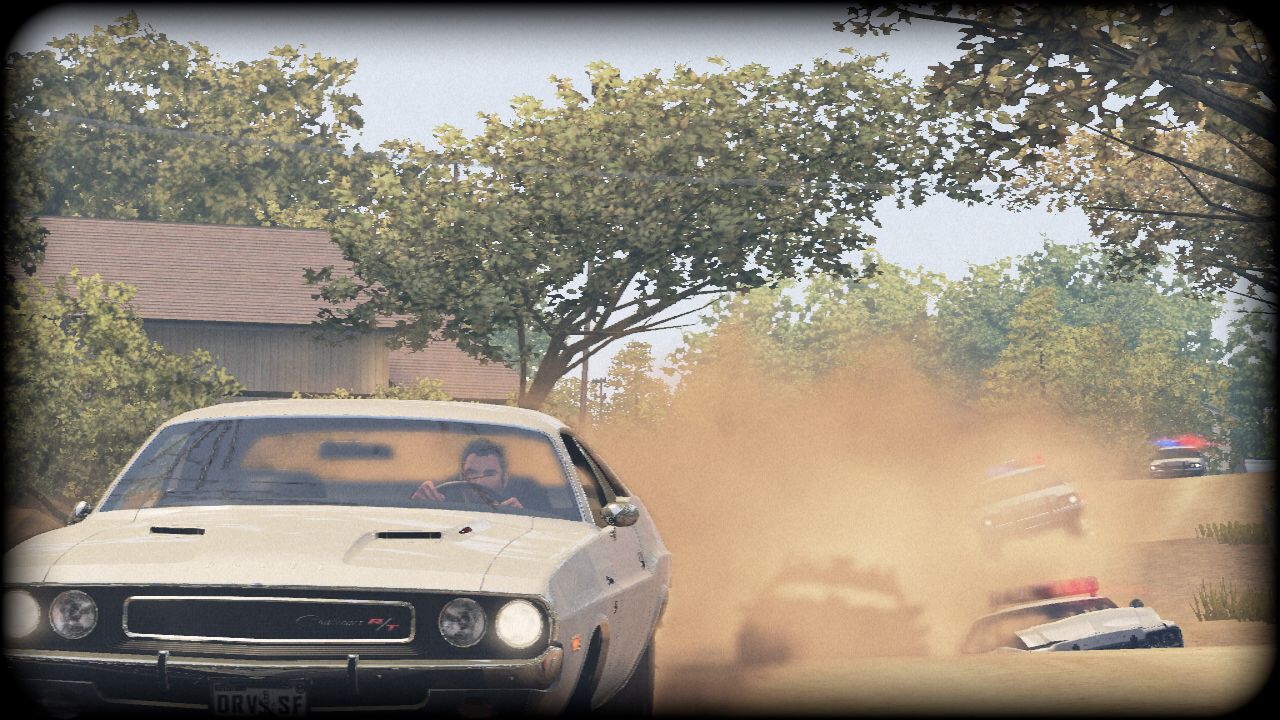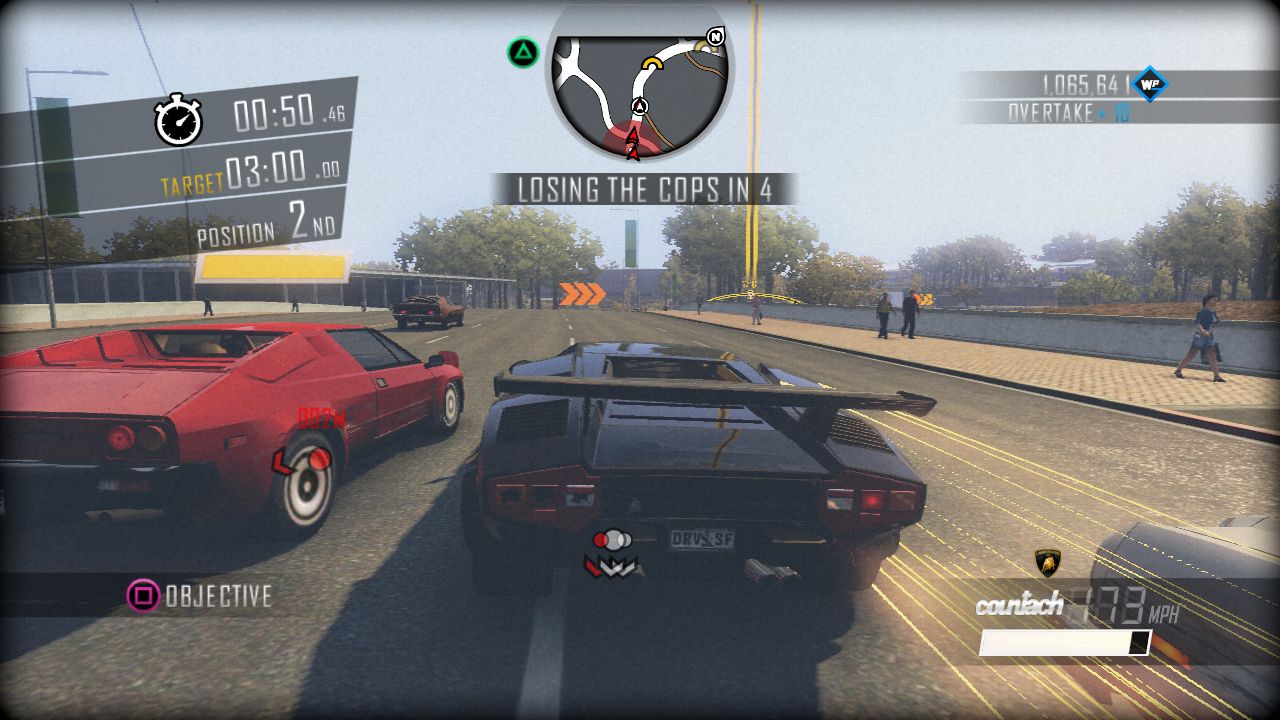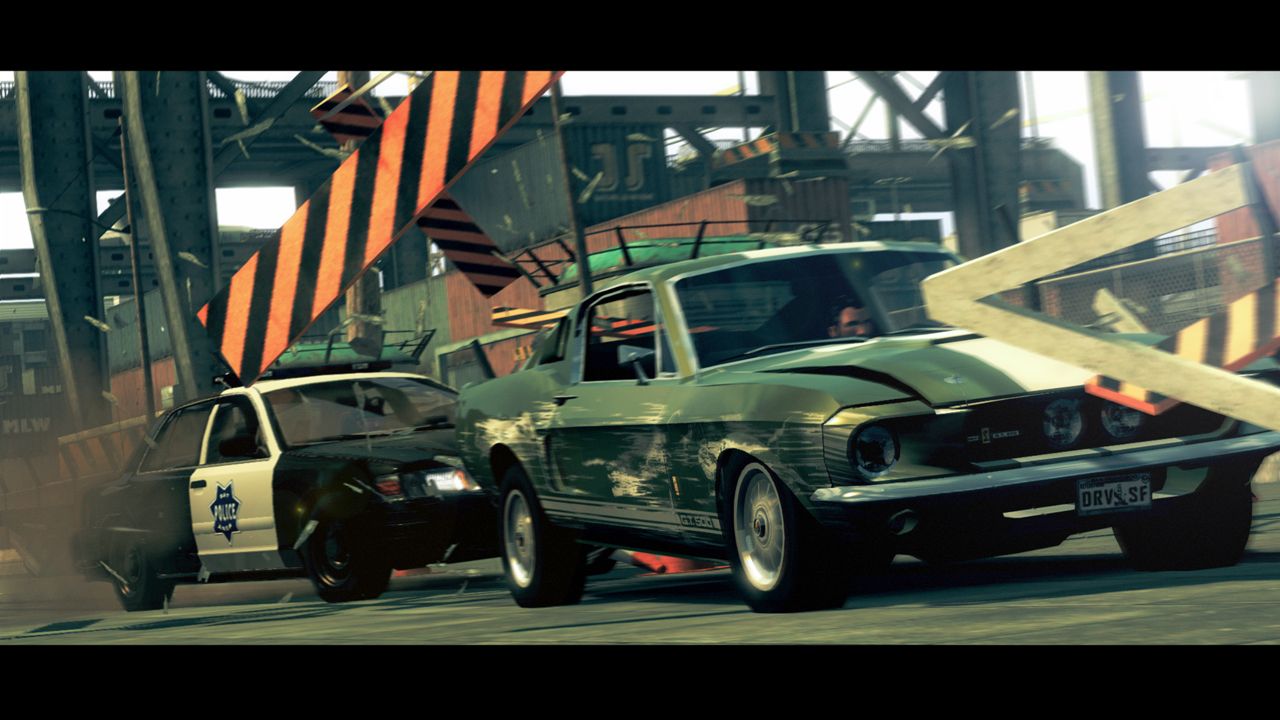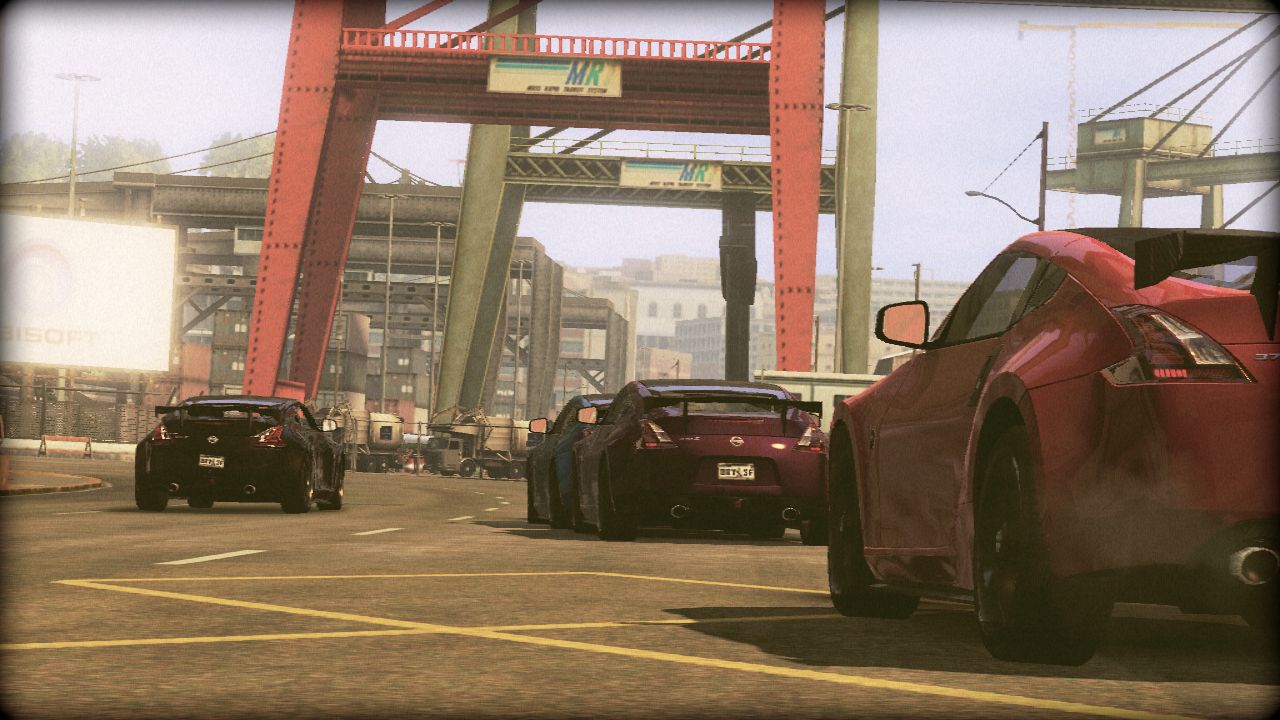Driver: San Francisco Review
A reboot of a classic racing franchise offers more than just a rehash of the original
Driver is considered by a lot of players to be a classic arcade title, from way back in early 2000s. It was regarded as a great game for its time, though unfortunately a few of its sequels never quite lived up to the original. Which brings us to Driver: San Francisco, an attempt by publishers Ubisoft to bring the franchise back into the spotlight, and onto the current generation of consoles. Driver SF brings back fun arcade racing into the modern day setting, and carries with it some innovative ideas that work really well. An open world racing game, already a rarity of the genre, makes Driver SF a fun, compelling, and surprisingly unique experience that shouldn’t be missed by arcade racing fans.

Though racing titles aren’t known for their plot lines, Driver SF attempts to tell a rather ambitious and intriguing tale. The story continues right on the heels of Driv3r, as players assume the role of John Tanner – a police officer that’s known for his excellent driving skill. His nemesis Jericho has been arrested and is set to be transported, however with some help he hijacks the armoured truck and goes after Tanner. In an unfortunate accident, Tanner is hit head-on by a semi truck, which makes him lose consciousness and be driven to the hospital, where he actually spends most of the game. You see, most of the game actually takes place in Tanner’s subconscious.
It may sound a bit ridiculous, but it allows the developers to do a ton of cool things with the plot and gameplay (more on that later). Tanner must unravel Jericho’s plot before it’s too late, as he also slowly comes to realize that his perception of reality isn’t what it seems. What follows is a very intriguing and involving story of not just Tanner but also all the people he gets to interact with. The game is quite focused on character development, more so than any other racing title in recent memory, which adds much exposition overall. Unorthodox is a good way to describe the setting in Driver SF, and though it may sound ridiculous at first, the developers pulled it off well.
Thanks to the surreal setting of the game, there are many unique gameplay elements present. The most notable of all is the Shift. Since the action is taking place inside Tanner’s coma, a mechanic in the game allows the player to instantly hover above the city at bird’s eye view and jump into any vehicle on the road. This is a unique mechanic that’s not only core to the overall experience, but it’s also extremely well implemented and designed. During the game’s many missions, most allow the player to jump out of the car they are driving and into another with a quick press of a button. It’s always extremely satisfying to Shift into oncoming traffic and cause havoc for your targets or racing opponents, as you crash into them head-on. The game also offers a boost mechanic, which works as expected and can also be used to deal additional damage to nearby opponents by ramming them.
Anytime that you Shift into a car with a passenger, it’s bound to create an often awkward or even hilarious situation. As Tanner becomes the driver, their passenger could be in the middle of discussing their emotional breakup, speaking as a Pirate, or wanting you to impress them. As it happens, Tanner is quick on his feet and often attempts to continue the conversation he’s just stumbled on to, resulting in some very funny lines of dialogue. As you drive with hectic pace, the passengers react as well, from screaming to let them out, to begging you not to scratch the paint, or indeed asking for more thrills. It’s often very random, amusing, and Tanner’s ability to either carry on the conversation or stop it dead in its tracks is the highlight.

For everything that a player completes in the game, be it drifting, narrowly avoiding traffic, or completing events, Willpower points are earned. Acting as the currency in the game, the points can be used to purchase new garages, cars, and abilities. There are over 100 licensed vehicles in the game, which keep the highways busy and provide many opportunities to Shift. Not only is it refreshing to see modern cars, it’s also great that most are actually not supercars. It’s a real thrill to finally find a Lamborghini or a Zonda cruising around the city that you can Shift to, or purchase it via the garage. This kind of realistic car selection is a refreshing change from the usual star-filled lineup of other racing games. And for those interested, there is indeed a New Game Plus option, allowing players to carry over all of their unlocks into another campaign playthrough.
Once you are behind the wheel of a vehicle is where the game shines, as expected. The handling model in Driver SF is great fun, as it feels very arcade like, with an extra drift tendency. As the game does its best to recreate the feel of the 70s, most of the cars drift very nicely and are difficult but also fun to control. The game does get into a bit of trouble when supercars are involved, as driving a Corvette around a corner feels like you’re on ice. But hey, at least it goes fast, as Driver SF handles the feeling of speed quite well. Even if you crash, there is always an opportunity to catch up as acceleration is handled well and there isn’t Cars are designed with three stat areas and behave appropriately depending on their levels: speed, strength, and drift. All of the stats are clearly visible when in Shift mode, allowing you to pick and choose a ride before you make a decision. Not only that, a high-quality visual damage system is also part of the game, as windshields smash and scrap metal goes flying.
Where the game struggles a bit, as with many titles in the genre, is the AI. Tanner’s opponents often pose respectable amount of skill, and regular races are a decent challenge. When it comes to chases though, the police AI are very unbalanced. Cops will be able to keep up with you endlessly, going at over 100 miles per hour in oncoming traffic lanes. It’s frustrating to see, but take a few sharp turns and alleyways, and the police get left behind in a matter of minutes. This kind of AI is unrealistic and somewhat frustrating, but not as bad as the friendly AI. Indeed, any time that the player leaves his own car to Shift into another for whatever purpose, an AI driver takes over. This could often cost you the race, as friendly AI is unable to keep speed and will quickly drop you down from first into last place if left on its own for too long. Some races actually require a one-two finish with two vehicles, and as you get them both in front, players are forced to continue constantly Shifting between them in order to prevent one from surely falling into 3rd place or worse.
The entirety of the game takes place in a well recreated city of San Francisco, as the title would suggest. It is a very open game world that is filled with various locales, from the busy downtown to the Golden Gate Bridge. As you progress through the story, the huge map gradually opens up and lets you drive around at will. The world is littered with dares (quick challenges to complete in any way you see fit) and side missions (organized events that take away the Shift ability for pure driving). The latter allows players to compete for higher scores and add to their leaderboard rankings. While the dares are fairly reminiscent of one another, the challenges and indeed the main quest offer a variety of tasks to complete and flex your creativity while doing so. Perhaps the only downside is that there are no daylight or weather changes to be had.

Outside of the story, there is a fully implemented online component. It should be noted that this is Ubisoft’s first title to implement UPass, a one-time code that unlocks multiplayer functionality and comes free with all new copies of the game. Those who don’t have the code will have to cough up extra dollars to play online[UPDATE: Due to a printing problem, the UPlay Pass has been removed from the game. Users can select to start the 2-day trial which will last forever]. The mechanics are a bit different in competitive multiplayer, but the Shift ability is fully present and works just like in single player. In most race types, players are able to Shift into other NPC vehicles and take control. The only difference is that the game world doesn’t slow down when in Shift mode, as it does during the offline campaign, so players must think quickly and choose new vehicles with care. There is a driver progression level for your online profile based on experience, which subsequently unlocks new modes of play and other extras.
Oddly enough, a lot of racing modes are actually locked away behind driver levels. So if you were hoping to jump into some team racing or takedown challenges, you’re out of luck until you’ve earned enough experience to reach a certain level. It seems unwarranted to lock away such major multiplayer components, as they aren’t much more complex than the Tag and Trailblazer modes which are offered right away. There is a large variety of multiplayer modes, most of them utilizing shift such as Tag and Capture the Flag, which work as expected. Some unique modes like Trailblazer (earn points by following an AI car’s trail and blocking others), team shift racing, relay races, and team rush are all well done and should provide many hours of varied entertainment. In a unique approach, before each event there is a qualifying stage, which determines the starting grid for the main event. During the qualifiers, a random objective is given with a specific time limit – ranging from who can amass the most drifting points, gain the most speed, smash the most markers, etc. These qualifiers are free-for-all, letting each player gain as many points as possible in any manner they see fit.
When playing in Shift-enabled game modes, there is a clearly larger amount of supercars roaming the streets, which makes for more of a fun and high adrenaline experience. In addition to unlocking new game modes with earned XP, players are also able to unlock new abilities. Items such as bigger energy boost bar, impulse wave attack, the ability to spawn a car using Shift, increase recharge speed of abilities, etc are all unlockable with higher levels. This unfortunately is bound to put lesser level players at a disadvantage, as pure driving skill only matters in the classic Racing modes, which aren’t likely to gain much popularity because of their simplicity. All in all, the online components function very well with some innovative game modes and tons of variety to be had. It’s worth noting that the framerate online doesn’t appear to be as stable as during single player, but it hasn’t been much of an issue.
Though the game is set in a modern setting, the presentation is full of influence from the 1970s. Immediately notable (and perhaps annoying to some players) is the camera filter, which adds a bit of grain to the screen and actually limits your field of view by blocking out the corners a bit. It takes a bit to get used to but after a while it isn’t an issue. There are collectible icons scattered throughout the world, which unlock special classic races from popular films. These chases and events amplify the camera filter, swap out the cars for the setting-appropriate models and let players re-live the experience. Sadly, unless you are familiar with the films from which these iconic races were recreated, you’re bound to be a bit indifferent to the experience, as the game doesn’t offer any background.

Much of the game’s story is told through cutscenes, which are very well done and look great. Perhaps more interesting is that the pre-rendered cutscenes are often seamlessly presented alongside with in-engine visuals. It is an unusual and rare choice, but works very well. There is exposition during the gameplay as well, but we only get to see the character models conversing in the car and it doesn’t look as good as the pre-rendered stuff. The engine overall looks a little dated, and you’d be hard pressed to find any overly impressive textures or visuals. However, without any loading screens as you roam or Shift around, the game’s visuals look on par with most recent titles. What Driver SF gets perfect is the smoke which results from burning out your tires – it looks simply fantastic, though it undermines the realism a bit as the game would have you believe that all cars are rear wheel drives.
Sound effects in the game are satisfactory but otherwise aren’t noteworthy, as for example it is difficult to tell the difference between engine noises of a Ford Taurus and a Volkswagen Beetle. The soundtrack, on the other hand, offers an excellent collection of licensed music tracks from the classic as well as modern eras. Character voice acting is well done; there is a ton of hilarious dialogue that’s well delivered. Unfortunately, not all of the writing is up to par, and as much as the voice actors can try, it’s difficult to work with very basic lines. Driver SF runs very well, without any bugs or glitches. Perhaps the most negative thing that can be said is that there are a few too many loading screens when jumping in/out of action and cutscenes.
Driver: San Francisco is quite simply a stellar reboot of a franchise. Delivering a unique and, most importantly, well executed Shift mechanic helps the game stand out alongside its peers. The arcade racing feels right, the open world is huge and littered with things to do, and though the AI could use some work, it’s nothing gamebreaking. Included online multiplayer options are varied and promise to provide many hours of entertainment. Arcade racing fans that are looking for some great action with a unique twist, an intriguing story, and robust multiplayer, should not miss Driver: San Francisco.
 Comments
Comments
|
||||||||||


 Sep 6, 2011 12:01:48 (Sep 6, 2011 12:01)
Sep 6, 2011 12:01:48 (Sep 6, 2011 12:01)













